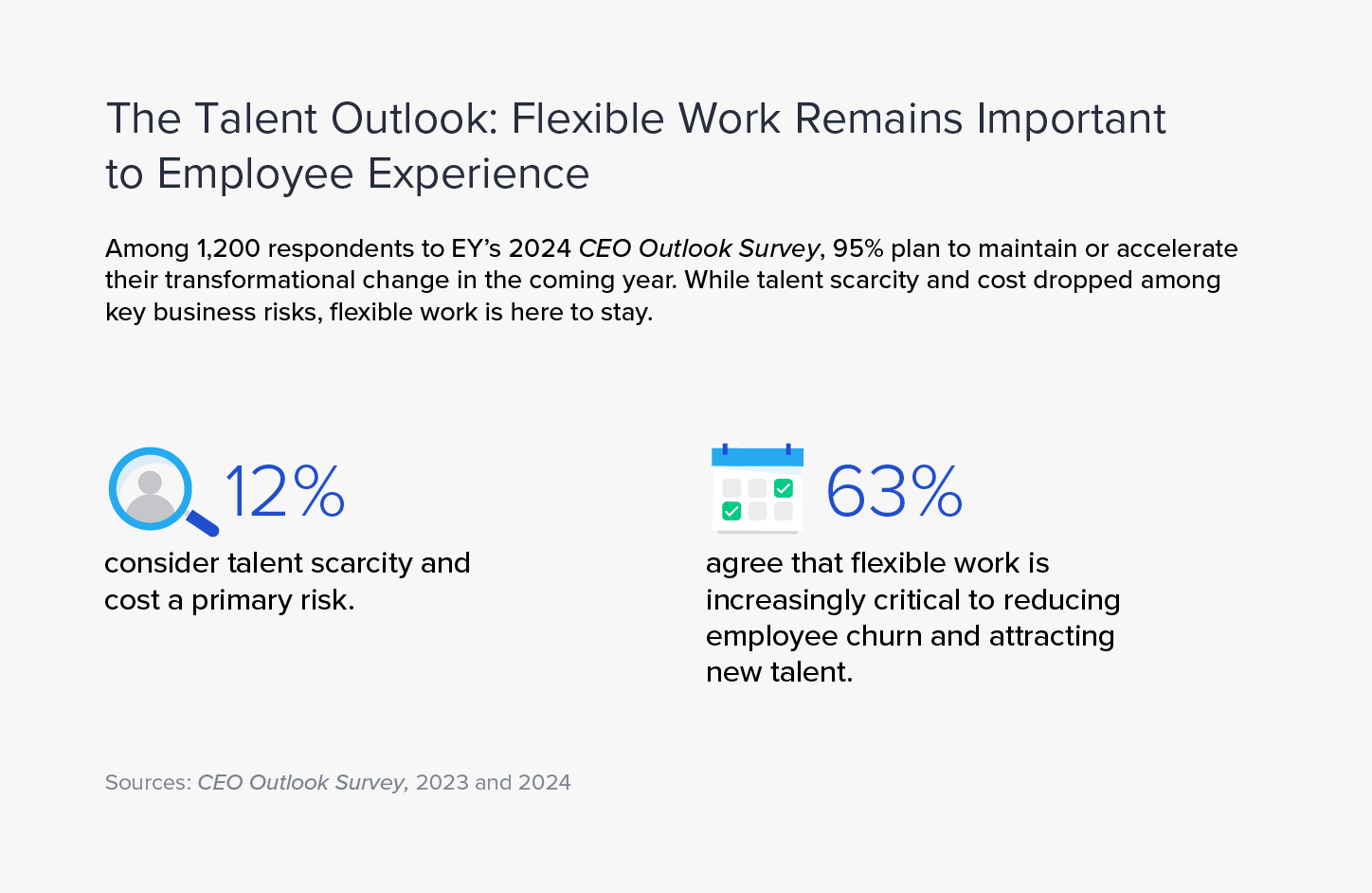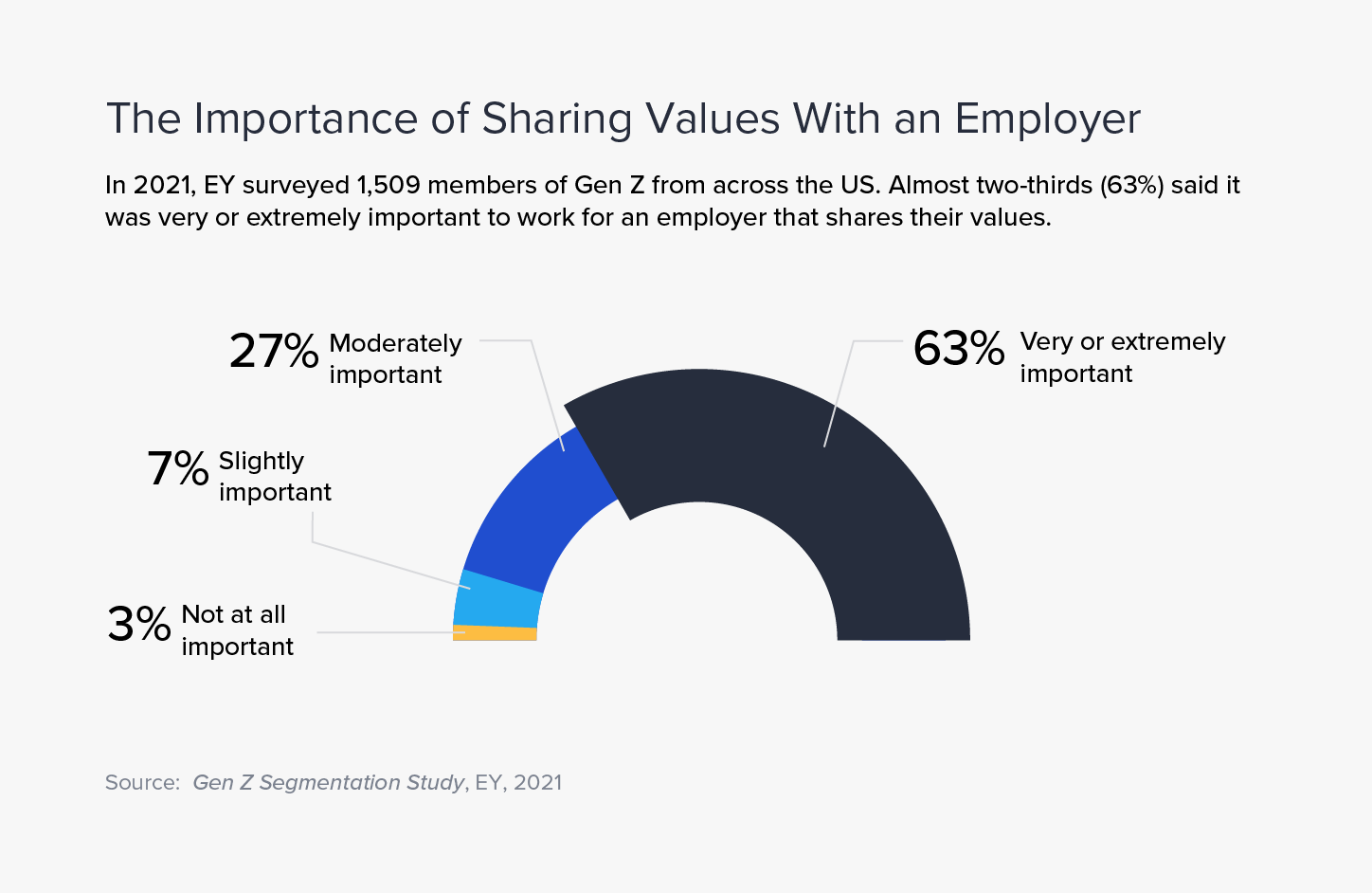Enhancing the Employee Experience: Lessons From an EY Talent Leader
authors are vetted experts in their fields and write on topics in which they are extremely knowledgeable. All of our content is peer reviewed and validated by world-class professionals.

Although the hiring market isn’t as tight as it once was, pay alone is still not enough to attract and retain top talent. Employees want to feel valued and respected. They want flexible work and career development opportunities. They want to feel connected to their colleagues and to a larger mission. For companies, the message is clear: Improve employee experience to gain a competitive advantage.

It’s crucial, now more than ever, for HR leaders to think like business strategists. For years, companies have focused on elevating the customer experience, from pre-purchase to post-transaction. Those same principles can be applied to elevating the employee experience, starting with a job candidate’s first conversation to the day they leave the company to innovative practices such as alumni programs that encourage former employees to remain advocates beyond their employment.
Employee Experience Strategy at EY
Employee experience is one of the top priorities for HR leaders today. It’s certainly top of mind for me, as a former executive and HR professional for a professional services organization and consultancy. EY’s internal insights provide growth to our clients around the globe. Getting the employee experience right at EY also helps us to provide the appropriate advice on the topic.
We know that a people-centered strategy powered by smart technology works because we implemented it ourselves. In 2016, the EY talent leadership team embarked on an end-to-end HR transformation to realign more than 800 systems and related processes across multiple locations. Working with EY People Advisory Services, we designed a full employee journey roadmap, crafted a globally consistent operating model, provided the talent network with technology, and developed the necessary change management strategy to enable this large HR transformation project.
Now a consumer-grade experience allows EY professionals to rapidly onboard, continuously upskill, and help manage other employment-related transactions with ease, using next-generation, AI-driven technologies that work seamlessly across devices.
Getting the Digital Employee Experience Right
With the proliferation of remote work, technology plays a crucial role in employees’ lives. But employees can become perplexed or frustrated by new technologies. According to external research, nearly half of employees say the tech they’re provided is difficult to use; over half say it’s missing key features; and 30% say they aren’t equipped with the tools to improve processes and increase productivity.
EY’s priority is to make sure technology enhances the employee experience rather than detracts from it. We evaluate a potential technology through the lens of a real person before we implement it. Just as we do with services equivalents, the HR team creates a core set of personas to help anticipate how a variety of EY professionals will interact with a new technology or system. As we change systems, we invite staff to participate in both design and user acceptance testing to observe how processes and systems are used by actual employees. We ask ourselves, does the tech make it easy, intuitive, and simple for a person to do their job?
Next, we provide training as part of our technology deployments, helping to ensure that HR staff and other employees are clear about the activity the technology performs. Then we look at adoption statistics—the number of people using the tech, the quality of data in the tech, service requests to our support teams, and other factors—to help us determine if the technology is working and being used as expected.
These steps are especially important when companies introduce an emerging technology, such as artificial intelligence (AI), which has the potential to provide enormous benefits to HR leaders and employees when used correctly.
Establishing Trust in Remote Settings
One technology the EY organization will not be leveraging is employee monitoring software. A report from the European Commission found that intrusive monitoring can negatively impact employee job satisfaction, increasing stress and reducing staff retention rates.
We believe the best work relationships are based on trust and transparency. In particular, we focus on helping our middle managers craft a welcoming environment, whether that is remote or hybrid. They should be creative in staying connected to their employees and should know what is going on with their team daily. At EY, it’s not about how many widgets somebody makes in a day, or how long they are on their computer, but rather what outcomes they are driving. We encourage professionals to come to the office for connection and collaboration, and also to events such as employee network group meetings or client engagement kickoff meetings.
How Purpose Impacts the Employee Experience
While we’re certainly using technology to improve the way we work, we also understand that the optimal digital strategy is a human-first strategy. Another key way we’re bolstering the employee experience is by putting purpose front and center. This is especially important to employees today—particularly those just starting out in their careers. Not only are they eager to learn new things, they also want to know that they’re connected to something bigger. They want to work for an organization that provides them with an opportunity to give back.

That’s why we make it easy for EY professionals to volunteer their time or energies through our EY Ripples corporate responsibility program. Launched in 2018, EY Ripples has an ambitious goal of positively impacting 1 billion lives by 2030. Our outreach has already encompassed more than 22,000 impact entrepreneurs spanning more than 80 countries. In fiscal year 2023, we had more than 70 joint client/EY Ripples initiatives. Through these endeavors, clean and cost-effective energy has been brought to families in Sierra Leone lacking grid connectivity, individuals in remote Chilean regions have gained access to medical services through telemedicine, and low-income communities in Kenya and India have been equipped with secure sanitation facilities.
Together, we achieved what none of us could have done alone: 46 million lives were impacted in FY23 and 127 million since EY Ripples launched.
Why Continuous Learning Matters
EY professionals want to feel connected to their wider community but they also want to understand their purpose within the organization. They want to know how they can continue to learn and grow, particularly in a rapidly changing world where the skills they had yesterday might not be as relevant today. That’s why we’re investing in upskilling, helping EY professionals earn additional certifications and degrees to understand emerging concepts.
Since 2020, we have launched three fully accredited master’s programs in association with Hult International Business School that are free for EY staff. These programs include the EY tech MBA by Hult, the EY master’s in sustainability by Hult, and the EY master’s in business analytics by Hult. These programs provide advanced degrees that include critical innovation-focused skill sets like AI, machine learning, and blockchain. In 2023, we celebrated our sixth and largest-ever EY tech MBA cohort with 74 graduates and the first-ever group to receive the EY master’s in sustainability, totaling 274 graduates across our EY degrees.
By combining empowering initiatives with the right digital technology and tools, we’ve created an experience that elevates employee engagement. HR leaders who want to win today’s war for talent will do the same. According to the EY 2023 Work Reimagined Survey, 34% of employees say they’re willing to change jobs in the next 12 months, which only emphasizes the importance of comprehensive total-rewards programs in retaining talent amid high turnover.
The views reflected in this article are the views of the author and do not necessarily reflect the views of the global EY organization or its member firms.
